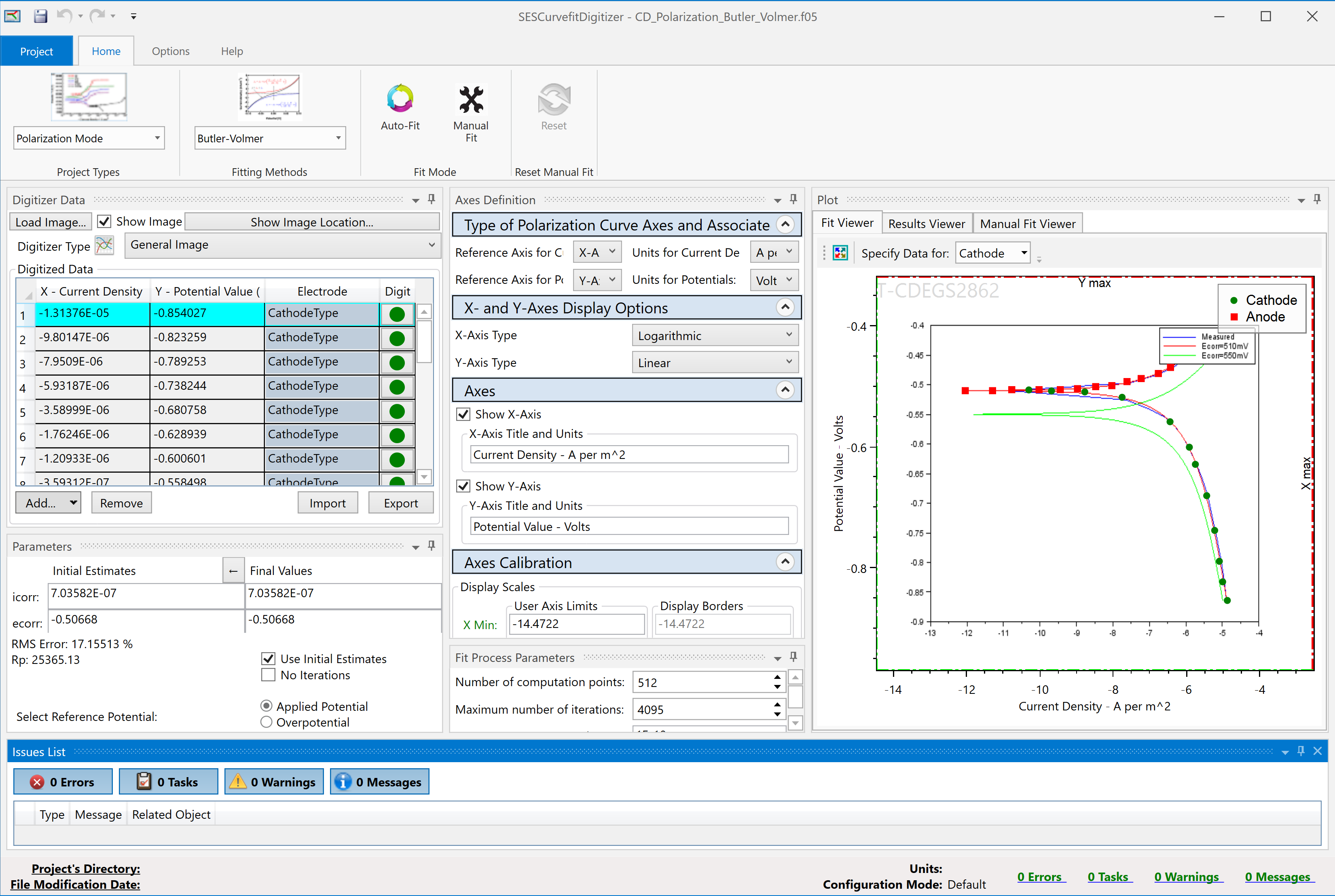SESCurvefitDigitizer
曲线数字化和拟合应用
SESCurvefitDigitizer提供完整的数字化和科学拟合曲线的功能。它引入了新的功能和改进,同时消除了其前身SESCurveFit的一些限制和约束。SESCurvefitDigitizer最重要的应用之一是与 CorrCAD 软件包结合使用,从实验性腐蚀极化数据中获得极化曲线模型。
技术说明
SESCurvefitDigitizer采用了最先进的工程优化方法,从实验数据中获得数字化数据和曲线拟合参数。例如,将腐蚀极化曲线数字化并通过选定的方法(如Bulter-Volmer方程)进行拟合。然后,极化曲线可以在 CorrCAD 软件包中用于表征埋入式和浸入式金属导体网络中的电化学腐蚀过程,以保护金属设施,如天然气管道、海上石油平台结构和电力设施资产免受腐蚀的危害。
SESCurvefitDigitizer还可以应用于普通曲线拟合,以便从实验数据中建立数学模型。
技术要点
SESCurvefitDigitizer由两个集成的软件工具组成。数字化转换器和专用曲线拟合实用程序。SESCurvefitDigitizer:
- 可以直接导入你的实验极化数据的数值。
- 可以使用SESCurvefitDigitizer内置的数字化和拟合工具,从含有极化数据图或极化曲线的图像中提取极化数据。
- 除了SESCurveFit内置的几种全极化和科学拟合方法外,还包括最通用的极化模式,即具有阳极和阴极浓度依赖性的Butler-Volmer,它涵盖了特殊和更复杂的极化模式。
总之,SESCurvefitDigitizer有五个曲线拟合选项:
- 非线性巴特勒 - 沃尔默活化极化模型,采用非线性最小二乘法确定控制模型的四个参数,即腐蚀电流密度,平衡电位,阳极塔菲尔斜率和阴极塔菲尔斜率。
- 非线性巴特勒 - 沃尔默浓差极化模型,采用非线性最小二乘法确定控制模型的五个参数,即腐蚀电流密度,平衡电位,阳极塔菲尔斜率,阴极塔菲尔斜率和极限电流密度。
- 多项式极化模型,使用线性最小二乘法来确定多项式模型的系数。
- 查找表极化模型使用线性插值来确定两个连续极化数据样本之间的极化值。
- 非线性巴特勒-沃尔默与阳极和阴极浓度极化模型,采用非线性最小二乘法来确定控制该模型的六个参数,即腐蚀电流密度、平衡电位、阳极塔菲尔斜率、阴极塔菲尔斜率以及阳极和阴极的极化电流密度。


